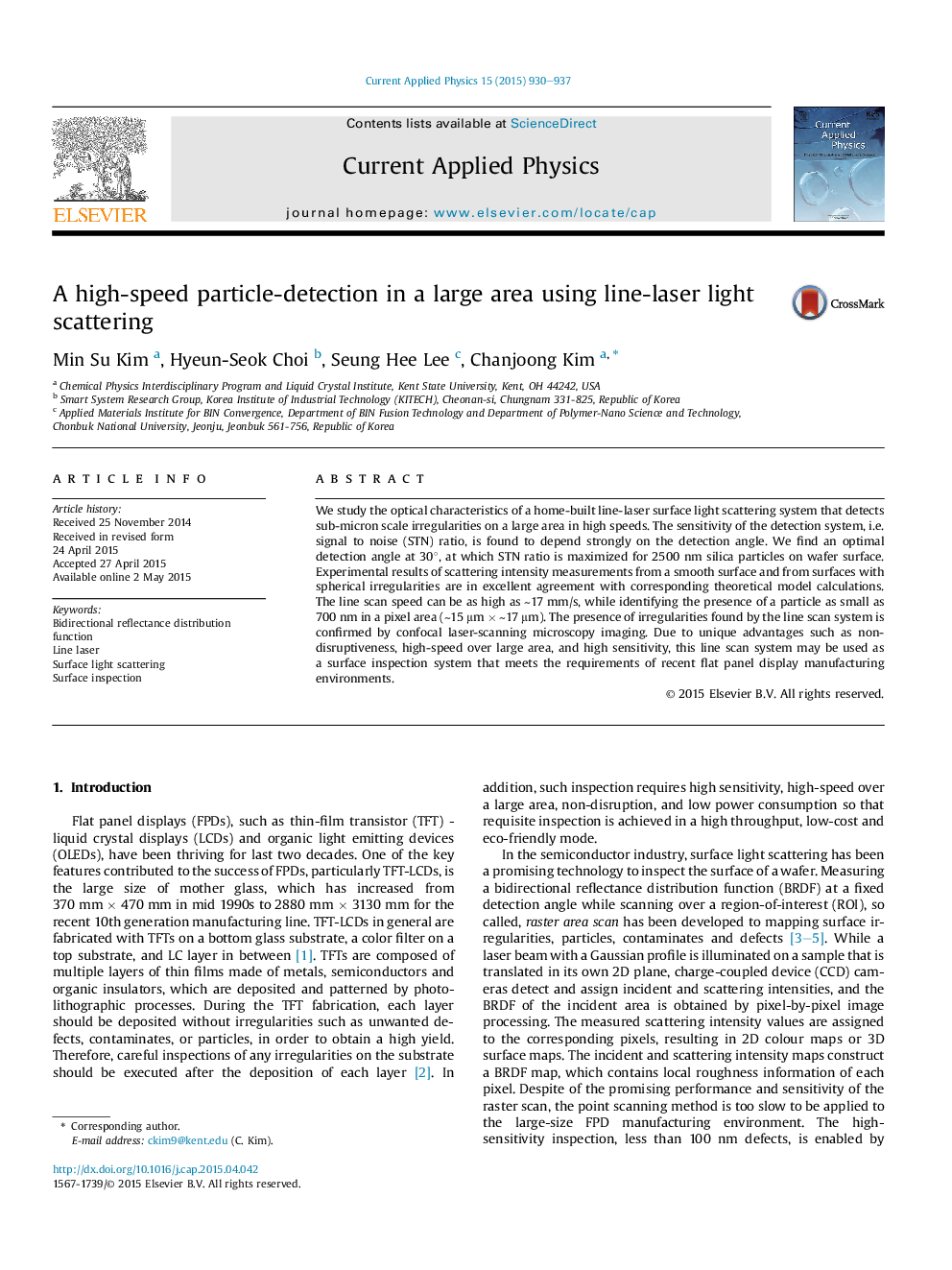| Article ID | Journal | Published Year | Pages | File Type |
|---|---|---|---|---|
| 1785610 | Current Applied Physics | 2015 | 8 Pages |
•We report a surface inspection system consisting of low-demanding components.•The system can scan a surface line-by-line at the speed of ∼17 mm/s.•The system can identify the presence of a submicron particle in a pixel area (15 × 17 μm2).•The components are a visible wavelength line-laser, a linear motion controller, and a CCD camera.•Surface mapping results at an optimum detection angle are confirmed by a confocal laser scanning microscope.
We study the optical characteristics of a home-built line-laser surface light scattering system that detects sub-micron scale irregularities on a large area in high speeds. The sensitivity of the detection system, i.e. signal to noise (STN) ratio, is found to depend strongly on the detection angle. We find an optimal detection angle at 30°, at which STN ratio is maximized for 2500 nm silica particles on wafer surface. Experimental results of scattering intensity measurements from a smooth surface and from surfaces with spherical irregularities are in excellent agreement with corresponding theoretical model calculations. The line scan speed can be as high as ∼17 mm/s, while identifying the presence of a particle as small as 700 nm in a pixel area (∼15 μm × ∼17 μm). The presence of irregularities found by the line scan system is confirmed by confocal laser-scanning microscopy imaging. Due to unique advantages such as non-disruptiveness, high-speed over large area, and high sensitivity, this line scan system may be used as a surface inspection system that meets the requirements of recent flat panel display manufacturing environments.
